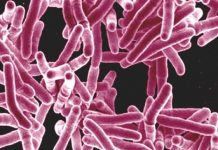Dive Brief:
Pfizer’s Duchenne muscular dystrophy gene therapy improved physical function in two patients measured one year after treatment, but also led to one patient being hospitalized for severe kidney complications.
The results, which were the first major data disclosure from Pfizer’s DMD program, buoyed shares in competitor Sarepta Therapeutics, which has a more advanced gene therapy that has shown a milder adverse event profile.
DMD is a competitive space for drug developers, with Solid BioSciences, Audentes Therapeutics and Vertex also now in the race to launch agents capable of modifying the disease by altering genetic expression.
Dive Insight:
In gene therapy, Pfizer has become a company to watch thanks to collaborations with Spark Therapeutics and Sangamo in hemophilia and its acquisition of Bamboo Therapeutics, which brought it the DMD gene therapy now called PF-06939926.
The pharma has a worthy rival in DMD in Sarepta, which in 2016 achieved the controversial approval of its exon-skipping agent Exondys 51 (eteplirsen). That approval allowed the Massachusetts-based company to expand its work in the disorder, an effort that included acquiring rights to the gene therapy now called SRP-9001 from Nationwide Children’s Hospital.
Sarepta has been trickling out data from its project for a year, joined in 2019 by Solid. A session today at the Parent Project Muscular Dystrophy annual conference was an opportunity for Pfizer to profile its candidate.
The verdict, if investor reaction is any indicator, was in favor of Sarepta: its shares rose 15% by mid-day, adding another $1.3 billion to the company’s market capitalization.
Sarepta’s lead now “looks increasingly unassailable,” argued SVB Leerink analyst Joseph Schwartz in a June 28 note to clients.
Pfizer has dosed only six patients at two different dose levels. In three patients dosed at 1E14 vector genomes per kilogram, mean expression of minidystrophin was about 24% two months and at 3E14 vg/kg it was nearly 30%.
Expression levels above 10% are considered sufficient to convert patients from DMD to the less-severe Becker muscular dystrophy, noted Cantor Fitzgerald analyst Louise Chen in a Friday investor note.
Dystrophin expression in Sarepta patients was 74%, although the biotech used a different method to assess protein levels. Sarepta used a test called Western blot, while Pfizer used a new assay called liquid chromatography mass spectrometry.
Twelve month functional data were available from two patients treated at the lower dose level. One saw his score on the North Star Ambulatory Assessment, a 34-point scale, rise from 24 to 27 and the other from 25 to 31. This looks near on par with that of SRP-9001, in which three of four patients saw eight-point increases in the same test, and the fourth two points, at 270 days.
These are small patient samples, however, so it is hard to say whether the same improvements would be seen in a broader DMD population.
The single case of kidney complication in the Pfizer trial is less encouraging, however. Michael Binks, Pfizer’s vice president of clinical research, said dosing has been paused as a result of this adverse event, which saw the patient placed in a pediatric intensive care unit with abnormal levels of proteins indicating a dangerous inflammatory response.
The patient was discharged 11 days later after treatment to reduce elevated levels of proteins called complement factors.
Sarepta has not reported any serious adverse events with SRP-9001, although it was subjected to a clinical hold resulting from manufacturing issues. The main side effects it’s reported have been elevated liver enzymes successfully treated with steroids, and nausea that diminished as patients stopped taking steroids.








